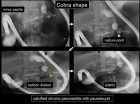Table of Contents
Improvements in the Subjective Sleep of Japanese Middle-aged Managers from the Consumption of an Edible Film Containing Crocetin
Published on: 13th November, 2023
It has been reported that Japanese people sleep for an average of 7 hours and 22 minutes per night, with those in their 40s and 50s sleeping the least. This is much less than in other developed countries. Aging has also been reported to decrease the total sleep time and sleep latency as well as increase wake after sleep onset (WASO). Crocetin is a carotenoid with antioxidant activity. It has been reported that 14 consecutive days of crocetin intake increases delta power during sleep and decreases WASO. However, the benefits of short-term ingestion have not been clarified. In this double-blind, randomized crossover study, we examined the effects of crocetin-containing edible films consumed for seven consecutive days on the sleep quality of healthy Japanese subjects working in management positions who were aged 45 years or older.The study participants comprised 20 subjects (12 males and 8 females; mean age 50.4 ± 4.8 years; body mass index (BMI) 22.5 ± 2.7). An electroencephalography (EEG) measuring device (InSomnograf®) was used to measure sleep objectively and a questionnaire, OSA Sleep Questionnaire MA version (OSA-MA) was used to assess sleep subjectively upon waking. The crocetin group demonstrated significantly higher values of OSA-MA Factor 3 (frequent dreaming) than the placebo group (placebo: 46.8 ± 6.9; crocetin: 49.5 ± 7.4). No differences were observed for the other four factors. No differences were observed in the sleep parameters determined with InSomnograf®.Our findings suggest a new effect of crocetin on sleep quality of frequent dreaming.
Edible Mushrooms and Their Holistic Approach on Health
Published on: 14th August, 2023
During this period of time, mushroom experience changes in functional aspects and consumption areas. Due to its magnificent role in promoting health, it was considered one of the most healthy sources of food. Agaricus spp., Marcrolepoita spp., Auricularia spp, Armillaria spp, Pholoita, Hericium, Grifola spp, Flammulina, and Hypsizygus spp. are some most commonly consumed mushrooms in the world. They provide inexpensive means of nutritious and tasty food worldwide. However, ancient people are also very much aware of their holistic function towards health and that was why they used mushrooms for medicinal purposes in the past onwards. Mushroom plays an important role in the treatment of some lethal diseases like cancer, inflammation, autoimmune disorders, allergy, hypertension, arthritis, hyperglycemia, atherosclerosis, and many more. Meanwhile, researchers still focus on other functions of mushrooms in health science and also explore their anticancerous activity. However, many findings are left to be found in the future. This review paper throws light on the various important mushrooms and their functions related to human health, and also ongoing research towards treating some critical diseases.
Impact of Moringa oleifera Leaf Flour supplement on Weight Gain in Moderately Acutely Malnourished Children in Benin
Published on: 10th August, 2023
In developing countries, malnutrition represents a public health problem, which affects many children under five, during their complementary feeding period. One way to overcome this problem is through the supplementation of complementary flours with locally available food resources, such as Moringa oleifera leaf (MOL). An experimental study was conducted from June through November 2019 in the southern-Benin, with moderately acutely malnourished (MAM) children, using a porridge made of a mixture of corn, malted sorghum, soybean, peanut, milk, and moringa leaf powder. A total of 150 MAM children aged 12-59 months were recruited and divided into two groups, an intervention group (48) and a control group (75). The intervention group received the test food, a porridge made of maize flour supplemented with Moringa oleifera leaf flour (MOL-flour), at least 5 times/week for 6 months. The control group, whose mothers received nutritional education sessions on food diversification as well as the different ways of preparing MOL meals. Sensory evaluation, anthropometric and dietary diversity data were collected. Z-scores Weight/Height, Weight/Age et Height/Age were determined before and right after the intervention. Results showed that 70% of the children and more than 75% of the mothers assessed the porridge as palatable. A significant average weight gain of 1.720 g (p < 0.005) was observed in the intervention group at the end of the experimentation, with a reduction of the prevalence of underweight by 1,33% (p > 0.05), and the number of acute Malnutrition children by 10,42% (p < 0.005).
Improvement of the Deterioration of the Gut Microbiota Due to High-fat, High-sucrose Diet Acylated Steryl-β-glycosides Intake
Published on: 20th July, 2023
Daily high-fat diet (HFD) intake is generally associated with an increased risk of metabolic diseases, cancer, and neurological disorders, which represent a major global health burden with significant social and economic consequences. In the present study, mice were treated with HFD containing 40% lipids. Furthermore, HFD was supplemented with 0.5% or 1.0% acylated sterol-β-glucoside (ASG).After 55 days of rearing, body weight, epididymal fat weight, weight, and pH of cecum contents and intestinal microflora were compared with mice fed HFD or a low-fat diet (LFD) containing lipid at 7%. The results showed that body weight and epididymis fat weight on the last day of feeding were significantly higher in HFD, 0.5% ASG, and 1.0% ASG compared to LFD, but significantly lower in 0.5% ASG and 1.0% ASG compared to HFD. Cecum content weight was lower with HFD compared to LFD but increased to LFD levels with the addition of ASG. Cecum pH was significantly lower on the 1.0% ASG compared to the other groups.The gut microbiota was significantly elevated in the HFD compared to the LFD, with Bacilliota specific to obese mice. However, the addition of ASG to the HFD decreased the Bacilliota and increased the Bacteroidota. Clostridium cluster XI and Clostridium subcluster XIVa, intestinal bacteria involved in the production of carcinogenic secondary bile acids, were markedly increased by consumption of the HFD but were markedly decreased by ASG.Daily intake of ASG may inhibit the deterioration of gut bacteria caused by HFD and reduce the disease risk posed by HFD.
Perceptions of Adolescent Mothers on Feeding and Nutrition of their Children aged 0-3 Years in Rural Bangladesh
Published on: 16th June, 2023
Proper feeding practices at an early age are the key to improving a child’s overall health and achieving developmental milestones. In Bangladesh, a large portion of rural girls become mothers before the age of 18. Past records show that most interventions are designed to improve infant and young child feeding practices targeting older mothers. That is why, this study has been designed with an aim to explore the perceptions and practices of infant and young children feeding among rural Bangladeshi mothers aged <19 years old. Data was collected through in-depth interviews and group discussions with a total of 40 adolescent mothers who have children aged 0-3 years. Data has revealed that the majority of the mothers hold very limited knowledge of nutrition and child nutrition but those who are educationally a bit ahead hold a little better knowledge. Participants are aware of breastfeeding but they all misinterpret the term ‘exclusive breastfeeding’ with other liquid food. It has also emerged that most of the mothers know the ideal timing of starting complementary feeding but very few of them actually understand what to feed children. In spite of having misconceptions and superstation rural adolescent mothers practice responsive feeding instead of force-feeding. No gender discrimination has been found regarding child feeding. The findings of the study pinpointed that mothers are unable to practice proper infant and child feeding due to a lack of knowledge and limited affordability. Educating girls & young mothers and improving financial security could be an effective way to promote improved infant feeding practices.
Study of kabul river canal sediments for heavy metals status and its accumulation in wheat plant (triticum aestivum)
Published on: 21st April, 2023
Canal cleaning is a routine activity on the canals diverted from the Kabul River. As a result, thousands of tons of sediment are removed as sludge and flushed back into the Kabul River. In Peshawar city, most people use this sediment as a soil conditioner in lawns. But the farmers are hesitant to apply it in agricultural fields. It is perceived that the sediment may be rich in heavy metal contents and, if used as a soil conditioner, may contaminate the food chain. To unveil the facts, this study was conducted with the aim of analyzing sediment samples for selected heavy metals and their uptake and accumulation in different parts of the wheat plant. For this purpose, the sediment collected from Warsak Gravity Canal (WGC) was analyzed for total essential heavy metals including iron (Fe), copper (Cu), cobalt (Co), manganese (Mn), and Zinc (Zn). Wheat crop was grown in four different pots consisting of pure soil, pure sediment, and two amendments i.e. soil mixed with 25% and 50% sediments. In comparison to sediment, the soil samples were high in copper, cobalt, and Zinc concentration. The concentration of iron and manganese was comparatively high in pure sediment but within permissible limits. The heavy metals uptake by the wheat crop was also within the permissible limits. The highest accumulation of copper, iron, and Zinc was observed in the roots of wheat plants. The highest value of cobalt was observed in the seed (0.407 mg Kg-1), which was within the safe range. Therefore, it is concluded that the sediment of the Kabul River canal cannot be considered a source of pollution in terms of heavy metals and can be used as a soil conditioner.
Assessment of on farm agrobiodiversity and its role in food sufficiency in mid hill, Nepal
Published on: 31st March, 2023
A survey was conducted in the agricultural farms in Dhulikhel Municipality, mid-hill, Kavre, Nepal aiming at assessing the status of agrobiodiversity with the purpose of understanding its role in food security taking altogether 133 farming households scattered in several settlements with lowland, upland, and home garden being the general agricultural land use systems. Biodiversity index: Shannon-Wiener Index was used to assess diversity of plant. The main purpose was to assess the farm agrobiodiversity and to find out whether biodiversity level has a direct link to household food self-sufficiency. For descriptive analysis frequency, percentage, mean and standard errors were used. In the case of inferential statistics independent sample t - test and binary logistic was used to find the odd ratio of practicing home garden. The result showed that the average landholding size was 0.66 ha/household with 0.37 ha, 0.3 ha, and 0.06 ha being upland, low land, and home garden, respectively. A total of 136 plant species were documented out of which 74 were the effective number of species in the study area. Among the used plants, fodder shared 27% of the total plant diversity followed by fruit (21%), vegetable (19%), medicinal plants (8%), pulses (8%), spices (7%), oilseeds (5%) and cereals (5%). Similarly, the mean livestock unit (LSU) was 2.65. The overall Shannon-Wiener Index was 4.30 indicating high diversity of species and 87.7% of the species were evenly distributed. The Index was higher for vegetable (3.11) followed by fruits (2.9) and fodder (2.85). Higher diversity was found in fodder trees in lowlands whereas vegetable species were more diverse in upland and home garden. Similarly, the Index was 4.29 in the upland whereas it was 4.078 in the home garden followed by 3.13 in the lowland. The evenness was 0.899, 0.87, and 0.74 in upland, home garden and lowland, respectively. Higher species diversity revealed that the site was rich in agrobiodiversity. A significant positive correlation (0.22) was observed between Shannon-Wiener Index and farming years. Similarly, positive correlation (0.33) was found between an increase in the level of agrobiodiversity and food self-sufficiency. The result demonstrated that increasing crop diversity increases the household’s ability towards food sufficiency implying the need for the formulation and implementation of efficient policy to conserve the agrobiodiversity at municipality as well as national levels.
The effects of hemp seed consumption on depression, anxiety and cognitive improvement based on machine learning
Published on: 11th March, 2023
Background: Hemp seed (Cannabis sativa L.) is an annual herbaceous plant of the Cannabis genus that contains a large amount of protein, iron, and fatty acids, including linoleic, α-linolenic, and γ-linolenic acid. These compounds are involved in a number of biological activities, including immunity enhancement, hyperlipidemia, and inflammation reduction. Here, we investigated the antioxidant effects of hemp seed on human cognitive function.Methods: The test was administered to 34 healthy volunteers aged ≥ 20 years. Participants were selected according to age and sex and were administered 10 g of hemp seed three times daily (30 g/day) for 45 days. The outcome measurements were recorded using a survey, computerized neurocognitive tests, and artificial intelligence.Results: Survey analysis determined that both the Beck Anxiety Inventory and Beck Depression Inventory measurements decreased significantly after hemp seed consumption when compared to measurements taken before consumption (p < 0.05). Additionally, significant results were observed in the Stroop and Tower of London tasks (p < 0.05). The prediction performance for the antidepressant effect was 0.83 for the area under the curve in the random forest algorithm, which was superior to that of other machine learning methods. Conclusion: These results suggest that hemp seeds have a beneficial effect on cognitive impairment.
Nutrition as the cornerstone of immunity
Published on: 3rd March, 2023
Nutrition plays an essential role in the maintenance of a healthy immune system. The body requires a variety of essential nutrients to support the development and function of the immune system. A balanced diet that includes a variety of vegetables, whole grains, fruit, and lean proteins can provide the necessary nutrients for optimal immune health. Additionally, research has shown that certain dietary components may have specific immunomodulatory effects. This review will discuss the evidence linking nutrition to immunity and highlight recent findings on the potential benefits of certain dietary components for immune health.
Physical assets life cycle analysis in a food industry company - case study
Published on: 7th February, 2023
Monitoring the life cycle of physical assets (PA) implies addressing issues, such as PA’s energy efficiency and its replacement and definition of the most proper moment to renew. The goals of this article are: to present a characterization of energy sources and analyze the PA life cycle in a food sector company. First, it will be characterized the costs and the expenses of the organization’s energy sources, then, a study about the replacement of PA is presented; Traditional methods were used, such as economic life; The models that underlie it are discussed throughout the article, using actual data, for validation. Three methods for depreciation of PA are used: Linear Depreciation; Sum of Digits and Exponential. Other methods were used to determine the Economic Cycle for replacing PA: Uniform Annual Expenditure (MRAU); Minimizing the Average Total Cost (MCMT); and the MCMT-Reduced to Present Value (MCMT-RVP). The equipment of the study was bakery ovens (gas and electrical). Results and conclusions from the application of the methods used in the evaluation of these PAs are presented.
An overview of the influence of climate change on food security and human health
Published on: 18th January, 2023
Climate change is increasing the frequency of climate-related disasters, creating greater risks of hunger and the breakdown of food systems. The sustainability of our planet is currently a major concern for the global community and has been a central theme for a number of major global initiatives in recent years. Climate change has prevalent, multi-faceted, and temporal impacts on food security. Higher temperatures, water scarcity, extreme events like droughts and floods and greater CO2 concentrations in the atmosphere have already begun to impact staple crops around the world. The warming climate is already taking a toll on human health, causing widespread hunger and illness that will grow exponentially worse, and will pose a major threat to human well-being. In this article, an attempt has been made to discuss some critical issues relevant to the four dimensions of food security and to provide broader perspectives on climate change and its impacts on the food system, food security and human well-being.“Humanity is facing a rare challenge. But it is a common challenge. There are no sides in the fight for climate justice” (Kofi Annan’s message prior to the UN Climate Conference in Copenhagen 2009).

HSPI: We're glad you're here. Please click "create a new Query" if you are a new visitor to our website and need further information from us.
If you are already a member of our network and need to keep track of any developments regarding a question you have already submitted, click "take me to my Query."



















































































































































